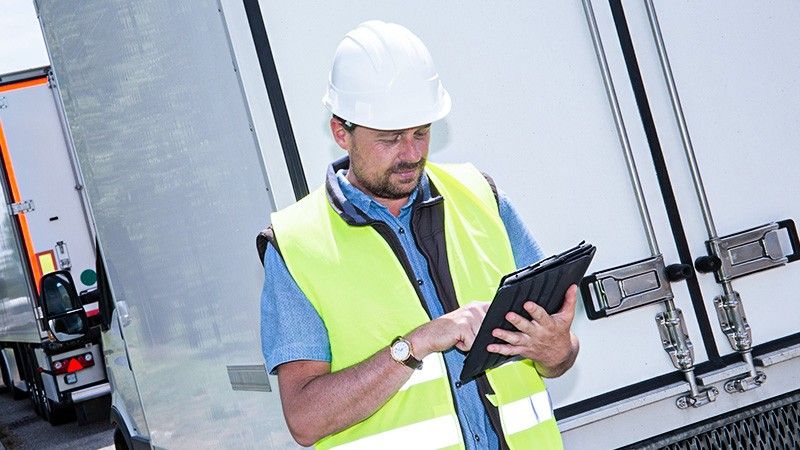Stay connected
Subscribe to our Inside WEX blog and follow us on social media for the insider view on everything WEX, from payments innovation to what it means to be a WEXer.

Since the early 2000s, social media has been making waves across all industries. It has redefined how businesses connect with each other and with their customers, and has allowed us to transcend our geographical boundaries – today, companies can easily reach customers all across the globe.
In the transportation and logistics industry, this level of engagement and connectivity drives new fleet networking opportunities. From building relationships with potential clients to elevating their brand voice, social media offers a dynamic space for trucking companies to grow in the industry.
Data retrieved from social media platforms – likes, comments, shares, etc. – can give you invaluable insights to help inform decision making and drive growth. By analyzing these metrics, fleets can gain a better understanding of their online presence, customer interests, and competitive market.
Since the rise of social media and concurrent technological advancements, efficiencies in scheduling, supply chain management, and payment processes grew exponentially, enabling the trucking industry itself to grow and build operational efficiencies.
Payment leader WEX has a unique perspective on the trucking industry that makes collaborating with the company even more relevant. WEX is fluent in the business of trucking and at the same time are experts in payment. The company has simplified complex payment systems to create efficiencies that enable even more savings while unlocking insights and opportunities for greater control over the financial supply chain and growth for the trucking industry.

Fleet supply chain networks became more robust as technology continued to push boundaries, and social media networks within the trucking industry can take advantage of technological advancement as well. If efficiencies brought on by developing technology can work to eliminate the driver shortage, then social media can complement that effort, possibly becoming the most powerful tool to address the crisis. Some trucking companies may be slow to adopt the technology, but they are coming around, not to follow a trend, but out of necessity to speak to a broader and younger audience.
Forbes’ Tony Pec emphasizes the importance of using social media for business exposure and growth. “Building a brand on social media is like having a sales team work for you 24/7/365. As your brand gets established online, new people will stumble upon it over time to learn about what you offer.”
A 2024 Gaggle study found that 95% of business-to-business companies across all industries use social media. As expected, social media investment might be different in the trucking industry since larger fleets typically have more resources to put toward a dedicated social media presence. But as social media channels like Instagram and X become ubiquitous tools for communication, more and more companies and company employees are embracing the fleet networking opportunities within those channels accordingly.
As the usage of smart phones and handhelds by truck drivers increases, so too does the popularity of social media among those users. Drivers use their phones to stay connected with driver and trucking news, their networks across the fleet industry, as well as their family and friends. They use social media to read the news or to stay on top of weather and traffic alerts. Some are even using social media as a second source of income – seeing the popularity of average blue collar workers as influencers and seizing the opportunity to do the same. Fleet managers and operators use social media for driver recruitment and brand awareness, and to highlight company culture.

As social media has grown to be an integral part of our lives, and as the trucking industry embraces social media as a crucial marketing tool, fleet managers and advertisers are getting smarter about how to reach fleet networks – by understanding where drivers are on social media. What are the platforms? Who are the users? How are they using each platform? To understand the full scope, we need to look at U.S. trucker demographics and how that matches up with social media consumption.
According to Zippia, there are close to one million professional truckers in the U.S. The average age is 47 years old and 84% of them are men. Most common ethnicities are White (58.5%), Hispanic/Latino (17.9%), and Black (14.4%). Let’s see how that matches up with popular social media platform demographics.
A Pew Research Center survey found that in 2023, the most popular platforms used by adults in the U.S. were YouTube (83%), Facebook (68%), and Instagram (47%). LinkedIn (30%) and X (22%) are also worth mentioning as leading B2B marketing platforms.
While those numbers might seem abstract and hard to grasp, the trucking industry needs to put them into the context of their own fleet networks and how to best cater to the right audience on the right platforms.
Social media platforms like YouTube, Facebook, and Instagram are widely used by adults in the U.S. This presents truckers and fleet owners with great chances to connect, share ideas, and find important resources. Additionally, platforms like LinkedIn and X can cater specifically to business needs, offering opportunities for professional growth and collaboration within the trucking industry. By embracing these platforms, truckers can build a stronger community, exchange knowledge, and advance in their profession.
Let’s face it, social media is here to stay, and everyone is using it. By embracing that idea and developing social media strategies along with the rest of business operations, fleet networks can work even harder for the good of the company and the industry overall.
Learn more on how to better manage your over-the-road fleet:
To learn more about WEX, a growing and global organization, please visit wexinc.com.
All fleet cards are not the same, and different types of fuel cards suit the needs of different kinds and sizes of businesses. View WEX’s fleet card comparison chart to see which fleet fuel card is right for you.
Sources:
Zippia
Forbes
Pew Research Center
Editorial note: This article was originally published on August 19, 2019, and has been updated for this publication.
Subscribe to our Inside WEX blog and follow us on social media for the insider view on everything WEX, from payments innovation to what it means to be a WEXer.